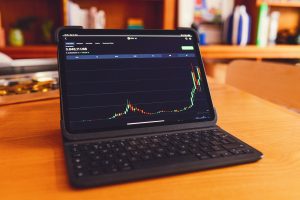2024 marks the 15th year of Bitcoin's creation, kickstarting a wave of countless different types of digital currencies.
Despite the reliability of financial assets like stocks, more investors are paying attention to crypto.
Rightfully so, as this market is worth $1.77 trillion with over 2 million existing tokens. So, it's clear why people want to trade cryptocurrencies.
What To Expect in Crypto in 2024
ETF Applications
The first highly anticipated event of 2024 happened: the approval of Bitcoin exchange-traded funds (ETFs) by the Securities and Exchange Commission (SEC). This was a watershed moment for those who trade crypto for several reasons.
First, the strict SEC has continued cracking down on illegal crypto organizations. Hence, approval of a crypto-related product from this seemingly anti-crypto regulator seemed unlikely.
After months of pushback and delays in 2023, the SEC met the January 10, 2024, deadline. The regulator gave the green light to 11 ETF applications from financial institutions like BlackRock, Fidelity Investments, and Invesco.
An exchange-traded fund means considerable institutional money will enter the crypto market. It also legitimizes this market in the eyes of traditional investors, who may have pushed away digital currencies for many reasons.
A common problem with this asset is the lack of regulation. Yet, with a seal of approval from the SEC, it provides a safer method for investors to participate in this market. Analysts believe more institutions will file ETF applications for other coins in 2024.
Bitcoin Halving
The Bitcoin network will undergo its fourth halving on April 23, 2024. This quadrennial event is when the mining rewards for the blockchain are split in half. These have reduced from 50 BTC to 25 BTC (in 2012), 25 BTC to 12.5 BTC (in 2016), and 12.5 BTC to 6.25 BTC (in 2020). The Bitcoin network will now cut this figure to 3.125 BTC.
The aim of halving is reducing the number of tokens. Since Bitcoin has a fixed supply of 21 million, halving slows down the rate of production. With the current circulating supply at 19,596,306 BTC, it will only be in 2140 when Bitcoin hits 21 million.
Halving aligns with the fundamental laws of supply and demand. With a lower supply of coins, a greater demand inevitably increases the value of the asset in question. Over the years, these events have proven bullish catalysts for the entire crypto market.
Central Bank Digital Currencies
A central bank digital currency (CBDC) is a digital legal tender produced by a country's central bank. This concept is still relatively new, with only a handful of nations having CBDCs. CBDCs arose for many reasons.
The first is massive financial institutions capitalizing on the digital revolution, which was hard to ignore as time passed. Second — as mentioned earlier — regulation is a considerable drawback for those who trade crypto. CDBCs are safer digital money for a country's citizens than decentralized currencies like Bitcoin.
Still, CDBCs have their share of critics due to privacy concerns and defeating the purpose of decentralization. Regardless, more than 100 countries are exploring CBDCs, meaning we should see a few of these getting launched over the next few years.
Alternatively, the more experimental countries may adopt digital currencies as legal tender, as the Central African Republic and El Salvador have demonstrated.
The Advantages of Trading Crypto

Source: rc.xyz NFT gallery, via Unsplash
Let's briefly cover the reasons that attract people to crypto trading.
● High returns: Historically, digital currencies have proven to be the best-performing financial assets.
● Massive trading volume: As stated earlier, crypto is a trillion-dollar market, equaling substantial liquidity.
● 24/7 trading: Unlike stocks, forex, or other traded assets, the crypto market is open daily throughout the year.
● Wide market range: The rate at which new digital currencies are launched means traders have a broad selection to choose from.
● No ownership of the digital asset: Unless one invests in a coin, trading is best for those who don't want to hold crypto in a wallet.
All that's left for those who wish to trade crypto is a well-known broker or trading provider offering them the best chances of success.
Where to From Here?

Source: Alesia Kozik via Pexels
It's clear that while there are many unknowns, the future of crypto looks promising from a user and investing perspective. There will come a time when this digital market will be familiar to everyone, as seen with other traditional assets.
OANDA is among the oldest derivative providers, with over 25 years of experience providing leading tools, transparent pricing, and cutting-edge platforms. It's an affordable platform to trade crypto as no mark-ups apply on trades, and the account funding is low-cost.
It's not only the broker that matters but also understanding the risks involved in digital currencies. Hence, it's crucial to be well-informed and only invest in funds you are willing to lose.











